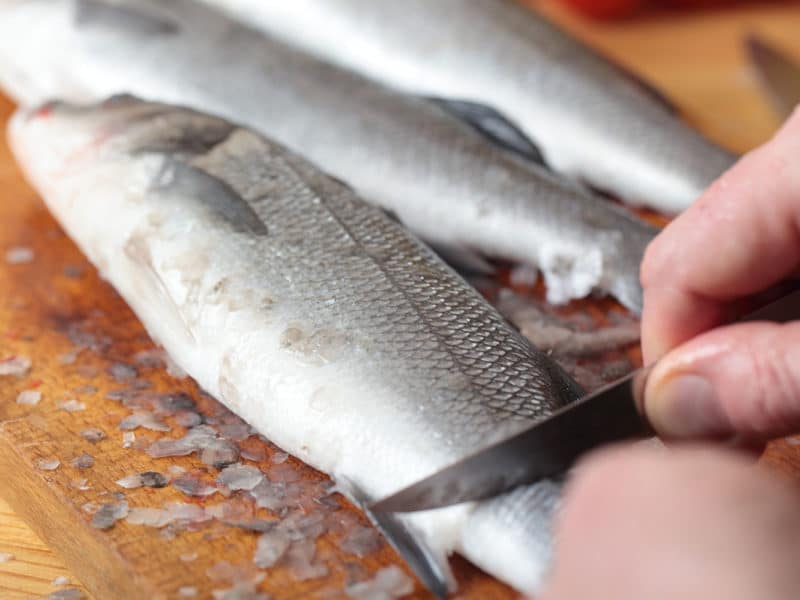Tips and tricks

Gutting and Cleaning Your Fish
Now that you have carefully measured and weighed your catch to prove that you caught the biggest fish of all, let’s get down to business: gutting (and cleaning) your fish.
Is it necessary to gut your fish?
A dead fish’s flesh degrades slowly, but viscera (internal organs) are the most sensitive to the decomposition process. To prevent this decomposing from spoiling the flesh, it is usually recommended that you gut your fish before storing or cooking it. Gutting your fish means manually removing the organs from the abdominal part of the fish.
To gut a fish, we recommend that you use a tried and tested technique. It will ensure better results, and it will above all prevent you from damaging the flesh. You can find many step-by-step videos online that show how to gut a fish.
In some instances gutting is not even necessary. Using the filleting technique, you can remove pieces of meat from a fish without gutting it. Filleting is particularly interesting when dealing with bigger fish, such as a northern pike.
Cleaning your fish
Once gutting is done, many anglers also choose to clean their fish.
They proceed to:
- Cut the head off
- Remove the scales (scaling)
- Remove the skin
Is all of this necessary? Absolutely not. Actually, the decision to clean a fish really comes down to personal preferences. Cleaning a fish makes it possible, among other things, to make it easier to eat once on the plate, or to make a dish that might turn off some guests more attractive.
A few essentials
Gutting and cleaning a fish require some basic equipment:
- A large cutting board or countertop covered in newspaper
- A large sink to rinse off your fish
- A Rapala fillet knife (or any sharp knife)
- A butter knife or a spoon for scaling
- Tongs to remove skin and scales
- A cooler or re-sealable bags to store the gutted fish
- A trash can or bucket to throw out the scales and guts
Tips
- Some fish have very sharp fins. Wearing gloves could prevent injuries while handling the fish.
- After cleaning your fish, wash your hands with water and lemon juice to help getting rid of the tenacious fish smell.
There you go! All you have left to do is to cook your fish and enjoy it in good company.
Learn more
Find out how to fillet pike in this video produced by the Fédération québécoise des chasseurs et pêcheurs (FédéCP).
Antoine Port, fishing guide, explains in this other video from the FédéCP the best method for a simple and fast evisceration (in French only).
See also how to make walleye wallet fillets (in French only).
Nutritionist Geneviève O’Gleman shares her tips and tricks for conserving and cooking freshly-caught fish on the Sépaq blog.

